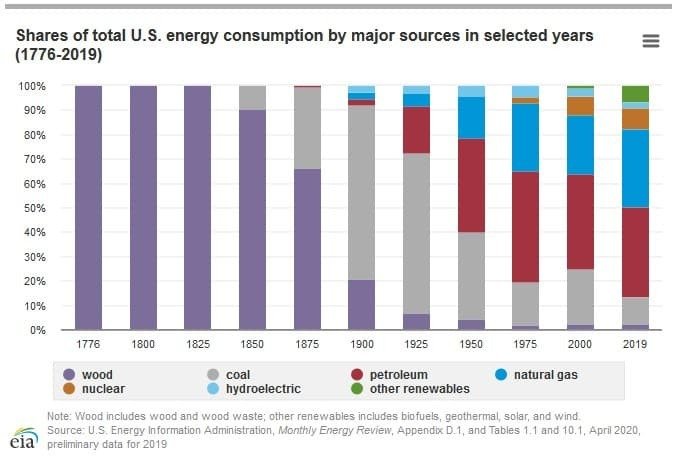China is the biggest winner of the US renewables boom

As the shift to clean and renewable energy begins to gain serious momentum, the US is now facing another conundrum: Being too dependent on China for the minerals used to build clean energy systems.
Since the days of President Jimmy Carter and the 1970s oil crisis, the US has relentlessly pursued the utopia of becoming energy independent. But with persistent oil crises and severe oil price shocks, it has become glaringly obvious that Washington will never achieve true energy independence by relying solely on fossil fuels, even if the United States finally becomes a net oil exporter. The majority of America’s citizens also feel that the government should ‘‘...focus on developing alternative sources of energy over expansion of fossil fuel sources’’ in a bid to alleviate climate change.
Whether it’s in the pursuit of energy independence or in a bid to ameliorate climate change, there’s an undeniable shift to renewables going on in the US, with renewable energy accounting for 11.4 percent of total US energy consumption in 2019 compared to only four percent two decades ago.
But as the shift to clean and renewable energy begins to gain serious momentum, the United States is now facing another conundrum: Being too dependent on China for the minerals used to build clean energy systems.
China supplies ~80 percent of the rare earths elements (REE) used by the United States to manufacture windmills, solar panels, electric car batteries, cellphones, computers, medical equipment, national defense systems, and even in oil and gas technologies.

Depending on China
Back in 2018, the Interior Department released a list of 35 minerals it classified as being ‘critical’ to the US economy. The alarming part: The US entirely relies on imports from China for 14 of these minerals, and imports 75 percent of at least another ten.
Those figures are not exaggerations: According to the US Geological Survey, China supplied 80 percent of the US’ REE in 2019. Yet another worrying statistic: Although the US mined 18,000 metric tons of its own rare earths in 2018 and 26,000 metric tonnes in 2019, the US Geological Survey has revealed that all domestic production of mineral concentrates was exported. Only three decades ago, the US was the world’s number-one producer of these minerals but has slipped down to seventh place.
Also on rt.com US resumes funding for rare earth miners amid deteriorating relations with China – reportChina’s vice-like grip on the US REE supply chain would become as clear as daylight if Democratic presidential candidate Joe Biden ascends into the Oval Office and starts to implement his $5 trillion climate plan.
Biden has pitched a highly ambitious $5 trillion-plus climate proposal that he says would be necessary if the US is to match the EU by becoming a net-zero carbon emission country by 2050. Biden has proposed a staggering $1.7 trillion in federal spending over the next decade to achieve this goal, with the private sector expected to chip in with the balance. Biden says the taxpayer costs can be recovered by repealing the generous tax bonanza that Trump granted US corporations and also by eliminating subsidies to the fossil fuel industry.
Becoming Self-Sufficient
With China being home to nearly half of the world’s known REE deposits, the US will have little choice than to ramp up its imports of these minerals from the Middle Kingdom as it transitions to renewables, something not made easy by the fact that the entire globe is in the same race to shift from fossil fuels to cleaner energy. Further, the specter of China using its strategic control of REE’s in a trade war remains very real.
Several energy experts have acknowledged this reality, and have emphasized that the US will only achieve true energy independence by inventing affordable clean energy technologies and ensuring that they are made locally and sold globally.
Also on rt.com What are rare earth metals & why they are China's ‘nuclear option’ in trade war with USAs US Senator Lisa Murkowski (R-AK), Chairman of the Senate Energy and Natural Resources Committee, has declared: "We need to reverse our damaging dependence on China and other nations and rebuild domestic supply chains for everything from personal protective equipment to clean energy technologies.”
But this is not just about lowering our dependence on China out of an abundance of caution. Dr. Arun Majumdar of Sanford University and co-Director of the Precourt Institute for Energy has pointed out that we import more than 50 percent of our oil at a cost of about $300 billion a year--money that could be used to create jobs if we became self-sufficient in our energy needs.
This article was originally published on Oilprice.com














